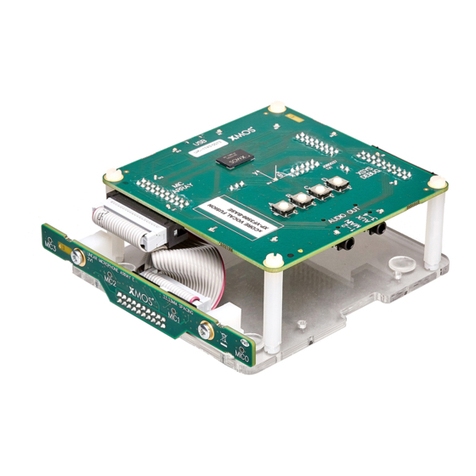
XC-1A Quick Start Guide (1.0) 5/7
4 Linux Users
1. Connect the XC-1A to your system
•
Connect the board to your development system using the USB cable provided.
•Log into a shell with root permissions.
•
Open the file
/etc/fstab
in an editor and add the following lines to access
the USB USB file system:
none /proc/bus/usb usbfs defaults,devmode=0666 0 0
•Unmount the USB file system with the following command:
umount /proc/bus/usb
•Remount the USB file system with the following command:
mount /proc/bus/usb
The XC-1A card starts up and flashes the LEDs around the XMOS chip on the
card. The XC-1A card has four demonstrations which you can launch using
the push buttons—see Section 5.
2. Download and configure the tools
•Download the tools archive from the following URL:
http://www.xmos.com/downloads
•Uncompress the archive to an installation directory using the command:
tar -xzf archive.tgz -C /home/user
The 64-bit tools require the 32-bit compatibility-layer libraries to work correctly.
~
For further information on installing these libraries on RedHat distributions,
browse to the following URL:
http://www.redhat.com/support
3. Start the tools
•
Configure the XMOS Tools environment. Change to the installation directory
and type:
source SetEnv
•To start the integrated development environment, type the command:
xde
•To use the command-line tools, call the required tool directly.
You are now ready to follow the XC-1A tutorial which explains how to write XC
.
programs for your XC-1A board. Download the tutorial from
http://www.xmos.com/published/xc1atut.
www.xmos.com
























